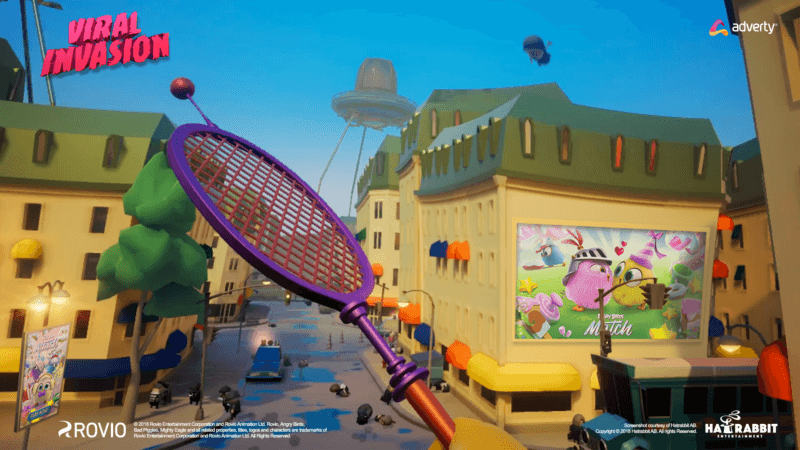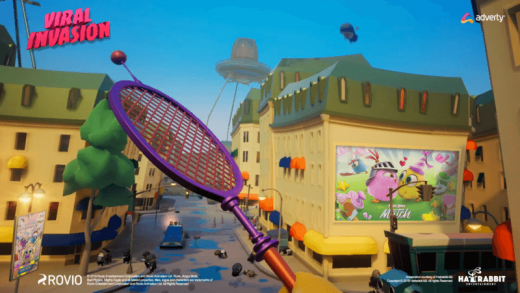Adverty launches ‘first programmatic platform’ for AR/VR in-app ads
The company is out with a SSP offering inventory for 2D AR/VR ads mapped inside a 3D environment.

Adverty ads (building wall, sign in street) in a Rovio game, Viral Invasion
A Stockholm-based startup has launched what it says is the first programmatic ad platform for augmented reality (AR) and virtual reality (VR) native ads.
Adverty actually made its platform available late last year in a non-programmatic version for a test project with Coca-Cola Company, and it is now being offered in general release for programmatic use. Rovio Entertainment, the company behind the “Angry Birds” game, is employing the platform, and Adverty says other brands are in discussion. Here’s some video from the Coke test:
Adverty provides a supply-side platform (SSP) that can accept 2D AR or VR ads directly from an advertiser or from a demand-side platform (DSP), or it can integrate with another SSP.
CEO and co-founder Niklas Bakos pointed out that 3D AR and VR ads cannot currently be distributed through programmatic ad platforms, although his company is working on a solution.
Instead, the 2D AR or VR ads are mapped onto the 3D environment in the app, such as ads showing on a billboard or street sign in the scene (see screen shot at top of page) or wrapped around an object, like a coffee cup.
Bakos said that most other ad companies working with AR or VR properties generally put the ads into the app’s menu screen, such as a banner, or they have a button to play a video ad. By contrast, he said, Adverty’s ads are all in the game experience itself.
Adverty is primarily working with game apps, although Bakos said his company is open to working with any type of app. The new platform, he said, is really two platforms in one system: one for mobile AR and one for VR on mobile, consoles or desktops, such as PC-based games for the latter device type.
VR ads’ viewability ‘close to 100 percent’
When an app developer works with Adverty, they add the Adverty software development kit (SDK) into the Unity game engine, and then they drop the Adverty ad units into the appropriate locations inside the environment.
Bakos noted that, since the Interactive Advertising Bureau (IAB) doesn’t yet have a full standard for VR and AR ads, Adverty embeds some popular IAB ad types, such as banners, inside its own ad units so that the ads can be served programmatically. The AR supports Apple’s ARKit and Android ARCore, and the VR supports virtually all of the current headsets.
The Adverty tech gets feedback from the VR app showing where the player is looking, and thus whether the ad is being seen. Although a CPM is charged, it only counts when the ad is viewed, and Bakos said his company’s viewability stats for VR are “very, very close to 100 percent.”
As for ads in AR environments, he said viewability is better than for, say, web-based video ads, but he doesn’t yet have stats. Ads in either format can be targeted by hardware, platform, age, rating, location, context or content types.
Bakos noted that some other startups, such as Immersv or Vertebrae, are also providing AR/VR ads. But, he added, Adverty is the “only one with AR ads inside of AR app content,” as the others offer AR ads in the mobile web. Immersv also provides VR ads in its own VR environment, while Bakos said “no one else has a programmatic solution for VR native ads.”
Marketing Land – Internet Marketing News, Strategies & Tips
(17)



